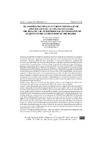Please use this identifier to cite or link to this item:
https://accedacris.ulpgc.es/jspui/handle/10553/37121
| Title: | El uso didáctico de los entornos personales de aprendizaje en el alumnado del grado | Other Titles: | The didactic use of the personal environments of learning in the student body of the degree | Authors: | Artiles Rodríguez, Josué Aguiar Perera, Mª Victoria Rodríguez Pulido, Josefa |
UNESCO Clasification: | 5801 Teoría y métodos educativos | Keywords: | Personal Learning Environments Virtual environment Search Information Information and Communications Technology (ITC) Social networks, et al |
Issue Date: | 2017 | Journal: | Pixel-Bit, Revista de Medios y Educacion | Abstract: | Los Entornos Personales de Aprendizaje suponen el entramado que la persona crea a partir de la red de herramientas y espacios que utiliza para aprender, es decir, su propio entorno de aprendizaje (Castañeda y Gutiérrez, 2010). Por ello, presentamos en el presente artículo los resultados más relevantes para comprender las estrategias empleadas por el alumnado en relación a la autopercepción y comunicación., la gestión del proceso de aprendizaje y la gestión de la información para beneficiarse y formalizar su aprendizaje. En este caso, presentamos los datos relevantes emanados del Proyecto CAPPLE (EDU2012-33256, financiado por el Ministerio de Economía y Competitividad) con respecto al alumnado de último año de carrera de las distintas áreas de conocimiento y titulaciones impartidas en instituciones de educación superior. El objetivo es conocer esos entornos, cómo son sus singularidades, qué estrategias propiciaron su formación y cuáles son las limitaciones que presentan. Se sigue un diseño metodológico mixto, cuantitativo y cualitativo, que permitió acercarse al objeto de estudio y validar el instrumento de investigación. Los resultados están vinculados a la finalidad de acceso a internet, las preferencias para favorecer la colaboración, la planificación del estudio y el análisis crítico de la información. Se discuten las implicaciones para la práctica. Taking into account that Personal Learning Environments supposes the framework that the person creates from the network of tools and spaces that he uses to learn, that is, his own learning environment (Castañeda y Gutiérrez, 2010) we present in this article The most relevant results that can lead us to understand the strategies used by students in relation to self-perception and communication, the management of the learning process and the management of information to benefit and formalize their learning. In this case, we present the relevant data from the CAPPLE Project (EDU2012-33256, funded by the Spanish Ministry of Economy and Competitiveness) with respect to the last year students of the different areas of knowledge and degrees taught at the University. The objective is to know these environments, how their singularities, what strategies led to their formation and what are the limitations they present. It follows a mixed methodological design, quantitative and qualitative, which allowed approach to the object of study and validate the research instrument. The results are linked to the purpose of internet access, preferences to favor collaboration and teamwork, study planning and critical analysis of information. Implications for practice are discussed |
URI: | https://accedacris.ulpgc.es/handle/10553/37121 | ISSN: | 1133-8482 | DOI: | 10.12795/pixelbit.2017.i51.05 | Source: | Pixel-Bit. Revista de Medios y Educación [ISSN 1133-8482], n. 51, p. 69-80 |
| Appears in Collections: | Artículos |
Page view(s)
97
checked on Aug 24, 2024
Download(s)
45
checked on Aug 24, 2024
Google ScholarTM
Check
Altmetric
Share
Export metadata
Items in accedaCRIS are protected by copyright, with all rights reserved, unless otherwise indicated.
